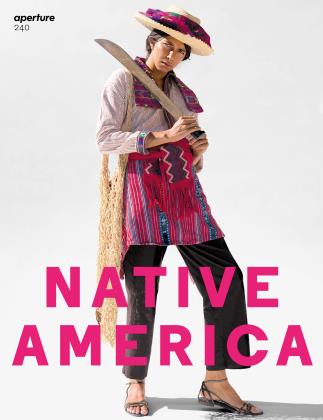In ancient Indigenous mythologies, the coyote is a sacred trickster that shifts between being a predator and a protector, its fanged mouth poised between a threatening snarl and a playful grin. For the Aztecs, the coyote was a god that frolicked among humans, sometimes provoking mayhem and disarray, and sometimes providing protection against greater evils. For the artist Guadalupe Maravilla, the coyote has been an intimate companion, and a protagonist in many of his elaborate sculptures, drawings, and highly choreographed performances based on autobiographical and fictional narratives. "Our ancestors were about creating mythologies, and I connected with that,” he says.
Maravilla anthropomorphizes the coyote into a canine-headed, larger-than-life being—somewhere between villain and superhero—that traverses great distances and crosses borders from El Salvador to New York. Maravilla operates on a vast mythological scale to cover his epic migratory journey as a child through Central America and Mexico and into the U.S. as part of the first wave of undocumented, unaccompanied youth arriving from that area. To be more specific, for his entire journey, Maravilla was accompanied by a series of "coyotes,” immigrant traffickers who safely relayed him to his destination. Displaced in his youth by El Salvador’s brutal civil war that spanned from 1979 through 1992, Maravilla and, eventually, his artistic practice and career were indelibly shaped by the events of history.
It makes sense that Maravilla would adopt a name and identity for himself that is also larger than life. Born Irvin Morazan, he changed his name to Guadalupe Maravilla in 2016, using the feminine first name his mother had intended to give him at birth since he was born on an auspicious date, December 12, when Latin America’s holiest patroness, the Virgin of Guadalupe, is celebrated. Taking his undocumented father’s fake last name, Maravilla, roughly translating to marvel or miracle, the artist emerged with a new identity and an origin story worthy of its telling.
For Maravilla, the telling of a story is as important as the object that contains it. In fact, for survivors of trauma—personal, intergenerational, historical—storytelling is a matter of life and death. Maravilla credits his sculptures and performances with saving his life when he was diagnosed with colon cancer in 2012. His Disease Thrower sculptures, which he began making in 2019, each feature a gong and various other instruments that, when activated, aim to heal listeners with vibrational frequencies. According to Maravilla, he was able to heal himself from his trauma-induced cancer by building and meditating on one of the sculptures while also attending sound-therapy sessions and receiving chemotherapy treatment. "In art school, I incorporated ghetto blasters into my sculptures,” says Maravilla. "Now I use instruments to help heal from stress.”
In recent months, with the outbreak of the coronavirus pandemic and social unrest in the United States, Maravilla has been busy meeting a large demand for his healing sculptures; to date, he’s made ten of them. He also currently raises funds for undocumented families in need. Using his Instagram account, Maravilla says, over thirty-five thousand dollars were contributed in just seven weeks. And yet, despite the shockingly extraordinary times, Maravilla draws on his resourcefulness—shared by many survivors, refugees, and immigrants—to rise to the occasion. "It’s not much different from being an artist. We use a lot of the same skills. We’re always making something out of nothing.”
Carribean Fragoza is a writer based in Los Angeles.
 View Full Issue
View Full Issue
More From This Issue
-
 Words
WordsKimowan Metchewais: A Kind Of Prayer
Fall 2020 By Christopher Green -
 Words
WordsPeople Of The Earth
Fall 2020 By Wendy Red Star -
 Words
WordsTo Walk In Both Worlds
Fall 2020 By Rebecca Bengal -
 Words
WordsRebecca Belmore: All Of My Relations
Fall 2020 By Wanda Nanibush -
 Pictures
PicturesWendy Red Star
Fall 2020 By Julia Bryan-Wilson -
 Pictures
PicturesMartine Gutierrez: Indigenous Woman
Fall 2020 By Nadiah Rivera Fellah
Subscribers can unlock every article Aperture has ever published Subscribe Now
Native America
-
 Words
WordsKimowan Metchewais: A Kind Of Prayer
Fall 2020 By Christopher Green -
 Words
WordsThe Lure Of Foraging
Fall 2020 By Eva Díaz -
 Words
WordsSovereignty: A Line In The Sand
Summer 1995 By Jolene Rickard -
 Pictures
PicturesMartine Gutierrez: Indigenous Woman
Fall 2020 By Nadiah Rivera Fellah -
 Words
WordsRebecca Belmore: All Of My Relations
Fall 2020 By Wanda Nanibush -
 Words
WordsPeople Of The Earth
Fall 2020 By Wendy Red Star
Carribean Fragoza
Pictures
-
 Pictures
PicturesFinding Orlando
Summer 2019 -
 Pictures
PicturesWalter Pfeiffer
Summer 2019 -
 Pictures
PicturesMotoyuki Daifu
Winter 2018 By Dan Abbe -
 Pictures
PicturesLucas Foglia
Spring 2018 By Jordan Kisner -
 Pictures
PicturesRobert Cumming Invents The Photograph
Summer 2013 By Sarah Bay Williams -
 Pictures
PicturesRosângela Rennó
Winter 2013 By Thyago Nogueira







